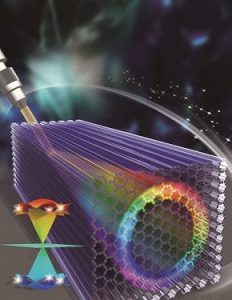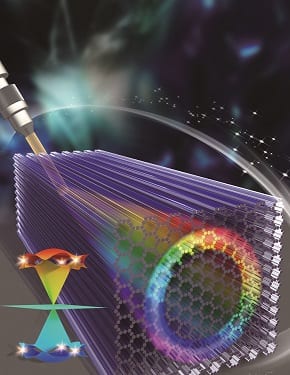 A two-dimensional super-honeycomb lattice represents a combination of the honeycomb lattice and the Lieb square lattice. This lattice is unique in that its energy band structure contains both flat bands and Dirac cones that allow for strong localization and conical diffraction of light propagating.
A two-dimensional super-honeycomb lattice represents a combination of the honeycomb lattice and the Lieb square lattice. This lattice is unique in that its energy band structure contains both flat bands and Dirac cones that allow for strong localization and conical diffraction of light propagating.
By choosing the input beam properly, the flat-band mode of the super-honeycomb lattice can be excited and the beam will exhibit strong localization during propagation. On the other hand, if the modes of the Dirac cones are excited, one will observe conical diffraction. Furthermore, if the input beam is chosen to excite sublattices of the super-honeycomb lattice and the modes of Dirac cones with different pseudospins, the pseudospin-mediated vortices based on the pseudospin-½ and pseudospin-1 Dirac cones will be observed.
A recent study by Zhong et al. in Annalen der Physik provides a new platform for investigating light trapping, higher pseudospin states, vortex generation, and other interesting phenomena in this intriguing physical system. In addition, the novel topological properties of the super-honeycomb lattice are now ready for exploration; and deeper investigation of this interesting system may inspire new ideas and bring about new physical phenomena.

















